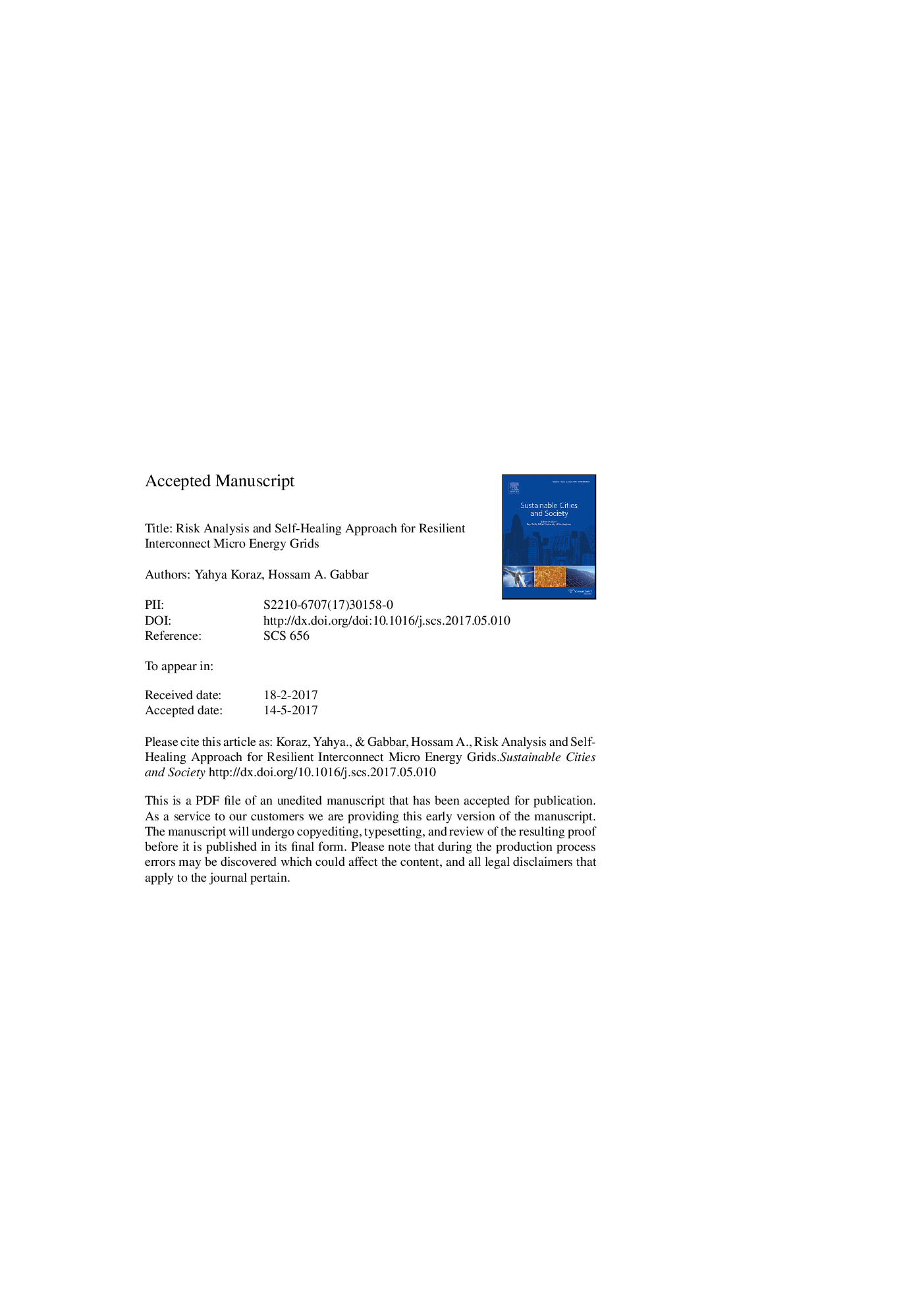| Article ID | Journal | Published Year | Pages | File Type |
|---|---|---|---|---|
| 4928038 | Sustainable Cities and Society | 2017 | 33 Pages |
Abstract
Micro energy grids (MEG) have been proposed to fulfil the concurrent expansion of electrical, cooling and heating energy distribution systems, without taking in consideration safety performance indices. This study is concern on risk analysis of micro energy grids (MEG) with corresponding uncertainties in electrical, cooling and thermal demands; further to the impact of PV and wind power productions intermittency. Several contributions are presented in this paper, such as: developed hazard matrix of MEG, developed two approaches of risk assessment, i.e. fault tree analysis and layer of protection analysis (LOPA), and finally proposed a solution to prevent and mitigate the hazard impacts by offering a resilient MEG configuration model. This model consists of an enhanced independent protection layers (IPL)s, i.e. Co-generation, thermal energy storage (TES) and multi-level hierarchical control. The performance of the proposed configuration model has proven that it reduces the influence of the renewable sources intermittency and also increases the MEG production capacity. Also the proposed model shows a robust self-healing capability, to meet on-demand load requirements, under different hazardous scenarios. Further to achieve the simultaneous goals of increasing the energy efficiency, reducing gases emission and improve sustainable economics.
Related Topics
Physical Sciences and Engineering
Energy
Renewable Energy, Sustainability and the Environment
Authors
Yahya Koraz, A. Gabbar,
